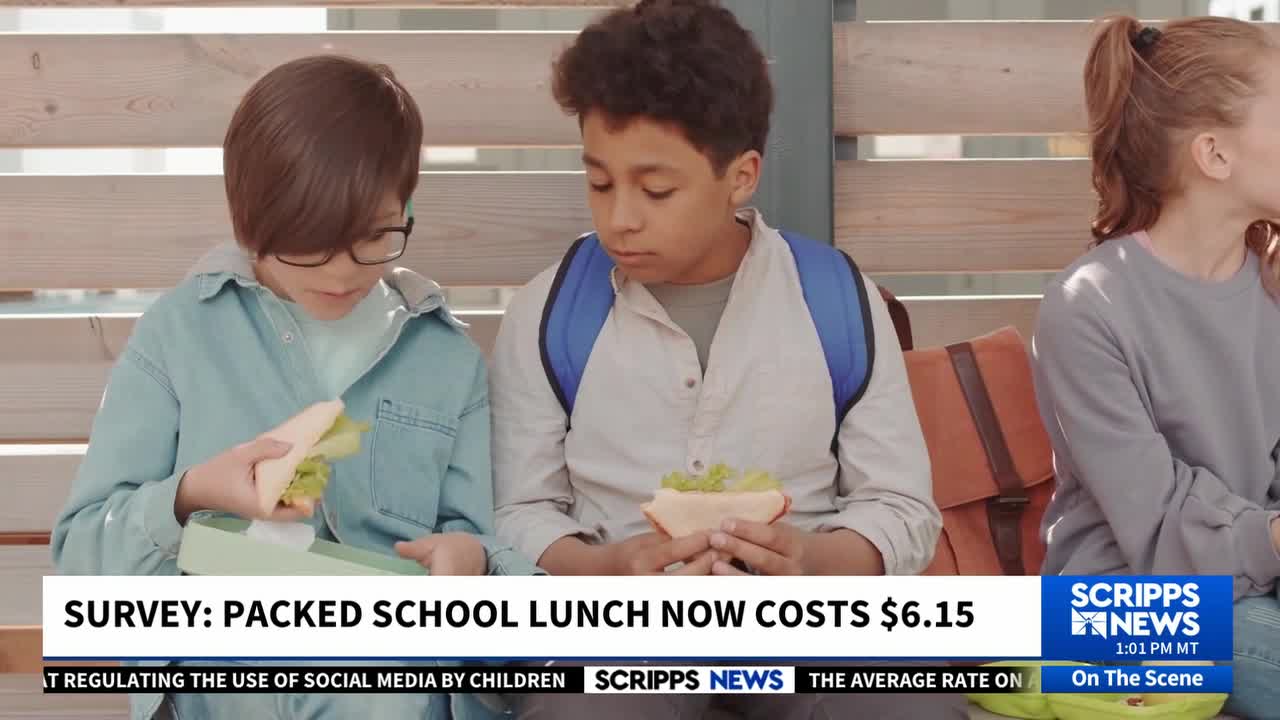The average lunch a parent sends with their child to school is expected to be 3% higher this year compared to last year, according to a new survey from Deloitte. The report states that the average packed school lunch will be $6.15 this school year, up from $5.99 a year ago.
The report indicates that costs for popular school lunch foods slightly outpaced the rate of inflation over the last year.
The report found that a classic school lunch — one that includes a peanut butter and jelly sandwich, baby carrots, an apple, cookies, and milk — would cost about 6% more than a year ago, averaging about $4.84 per meal. A more contemporary school lunch meal consisting of a chicken and avocado quesadilla, salsa, mango, a brownie, and juice might run a family about $7.30 per meal.
The report indicates that lunches provided by schools are typically about half the price of the average packed lunch. According to the report, school lunches typically cost about $2.99 per meal, but about half of schools provide a free lunch regardless of income.
Deloitte reports that about 90% of respondents said their child would be more likely to have a school-provided lunch than a packed lunch if the school supplies a free lunch. Additionally, about 4 in 10 respondents said they generally pack their child's lunch, a figure that tends to increase with income.
Of those who pack their child's lunch, 69% say it is because the food tastes better than school lunch. About 63% also believe they get a better value by packing lunch compared to buying the meal provided by schools.
RELATED STORY | No 'Ice Cream Fridays' for Ohio kids who owe lunch debt
Brian McCarthy, a principal in Deloitte's strategy and analytics practice, noted that figuring out what to pack is one of the biggest pain points parents face. He stated that retailers should focus on convenience and affordability.
"Solve for stress, not novelty," he said. "Help parents get through the week and they'll keep coming back. For retailers who can make lunch planning easier and more affordable, there's a chance to really stand out this season and help families feel a little less stressed."
During the 2020-21 and 2021-22 school years, the federal government provided funds for universal school lunches.
Some states have made school lunches universal, but most have not.
The federal free and reduced-cost lunch program is based on family income. For children to qualify for a free school lunch, their family must earn less than 130% of the federal poverty level. A family must earn less than 185% of the federal poverty level for a reduced-cost meal.
In 2025-26, the cutoff for free school lunches for a household of four is $41,795. For reduced-cost lunches, the cutoff for a household of four is $59,478.





